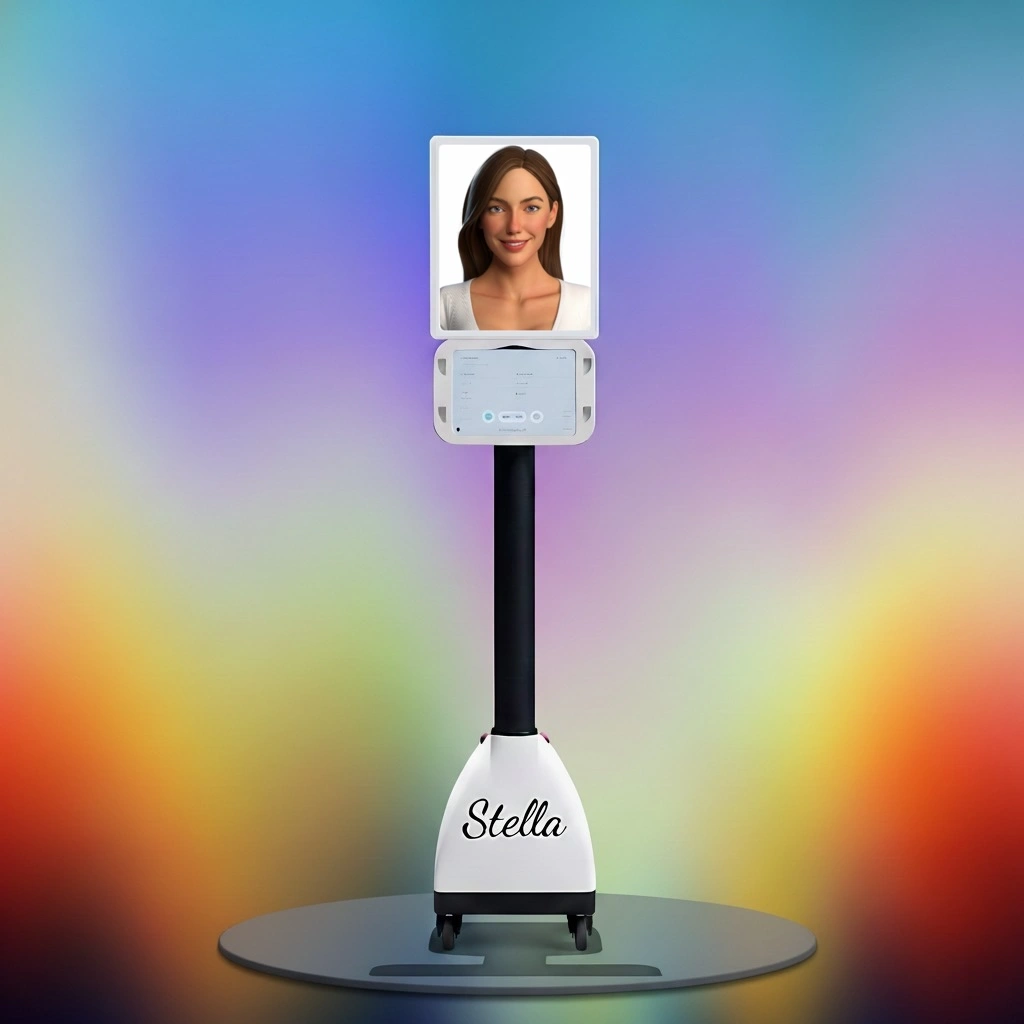Let's Talk About Kevin (and Karen)
You know the moment. The air in your store crackles. A customer’s voice, previously at a reasonable volume, starts to climb the octaves. Your newest employee’s eyes go wide with a look that says, “This is not what I signed up for.” Somewhere, a manager-seeking missile has just been launched, and it’s heading straight for you.
Ah, the difficult customer. They are the stuff of retail legend, the final boss of a long Saturday shift. They come in all shapes and sizes: the return policy lawyer, the coupon archaeologist with an expired find, the perpetually disappointed connoisseur of everything. Dealing with them is an unfortunate, yet unavoidable, part of the job. But here’s the thing: handling these encounters well isn’t just about damage control. It’s an opportunity to build a resilient team, reinforce your store’s values, and sometimes, even turn a disgruntled shopper into a loyal fan. (Okay, maybe not that often, but we can dream.)
This isn’t about grinning and bearing it or chanting “the customer is always right” while your soul slowly leaks out. This is about creating a practical playbook that empowers you and your staff to navigate these choppy waters with confidence, professionalism, and maybe—just maybe—a little bit of grace.
The De-Escalation Playbook: Turning Rage into Resolution
When a customer is already seeing red, your team’s first response is critical. It can either pour gasoline on the fire or calmly extinguish the flames. The key is to have a simple, repeatable framework that anyone can use, from the seasoned manager to the part-time associate on their third day.
The H.E.A.T. Method: A Framework That Actually Works
Forget complex psychological tricks. When tensions are high, simple is best. The H.E.A.T. method is a four-step process for disarming frustration and getting to the core of the issue. Train your staff on this, and they’ll have a powerful tool in their back pocket.
- Hear: This is the hardest and most important step. Let them talk. Don't interrupt, don't formulate your rebuttal, just listen. When they pause for a breath, repeat their concerns back to them. "So, to make sure I understand, the product you bought isn't working as expected, and you're frustrated by the inconvenience. Is that correct?" This shows you're paying attention and validates their reason for being upset.
- Empathize: You don't have to agree that your store is the worst place on Earth, but you must acknowledge their feelings. Simple phrases like, “That sounds incredibly frustrating,” or “I can see why you’re upset,” go a long way. Empathy builds a bridge from their island of anger to your shore of solutions.
- Apologize: This isn't an admission of guilt. You’re apologizing for their negative experience. "I'm so sorry you've had to deal with this today." This small act of humility can instantly de-escalate a situation.
- Take Action: This is where you become the hero. Offer a clear, actionable solution. "Let's get that exchanged for you right away," or "While we can't accept this return without a receipt, I can offer you a 20% discount on your next purchase." Give your team the power to offer one or two pre-approved solutions so they don't always have to "get a manager."
Body Language Jujitsu: Non-Verbal De-escalation
More than 90% of communication is non-verbal, and in a tense situation, every gesture is magnified. Teach your staff to use their body language as a de-escalation tool. Standing with arms crossed, for example, is like putting up a physical wall. Instead, encourage an open posture. Standing at a slight angle rather than directly face-to-face is less confrontational. A calm, neutral expression is far better than a forced, toothy grin, which can come across as condescending. It’s not about being submissive; it’s about projecting calm, confident control.
Knowing When to Fold 'Em (And When to Call for Backup)
Your team's safety and well-being are paramount. A customer being disappointed is one thing; a customer being abusive is another. Establish firm boundaries. There is a zero-tolerance policy for yelling, threats, or personal insults. Create a discreet signal or code word—like asking about "the new shipment from Denver"—that an employee can use to summon a manager when they feel unsafe or overwhelmed. Empowering your team to tap out isn’t a sign of weakness; it’s a sign of a healthy, supportive work environment.
The Proactive Defense: Preventing Problems Before They Start
The best way to handle a difficult customer is to prevent them from becoming difficult in the first place. Many conflicts arise from simple misunderstandings or feeling ignored. By creating a clear, welcoming, and informative environment, you can neutralize a huge number of potential issues before they even begin.
The Power of a Perfect First Impression
Think about it: how many problems could be avoided if every single customer was greeted warmly and immediately upon entering? A shopper who feels seen and valued from the get-go is far less likely to fly off the handle over a minor inconvenience. This is where an AI retail assistant like Stella becomes your secret weapon. She stands at the entrance, ensuring no one walks in unnoticed. Stella provides a consistently friendly and professional greeting every time, setting a positive tone before a customer even interacts with a human employee. She never has a bad day, never gets distracted, and always makes a perfect first impression.
Clarity is Kindness: Your Policies on Display
Is your return policy a well-guarded secret, only to be revealed in a tense standoff at the checkout counter? A surprising number of customer disputes stem from unclear policies. Make your rules for returns, exchanges, and promotions incredibly simple and visible. Post them near the register and have them printed on receipts. Better yet, let your AI assistant handle the frequently asked questions. A customer can ask Stella, "What's your return policy?" and get a clear, polite answer instantly. This frees your human staff from being the bearers of bad news and lets them focus on providing exceptional service.
Empowering Your Team: From Frazzled to Fearless
A well-trained and supported team is your ultimate defense. Investing in their confidence and giving them autonomy will pay dividends, not just in customer satisfaction, but in employee retention and morale. After all, a happy team is much better equipped to make unhappy customers, well, less unhappy.
Role-Playing: The Cringey but Crucial Training Tool
No one loves role-playing. It feels awkward and artificial. But so does trying to handle an irate customer for the first time with no practice. Running through common difficult scenarios in a low-stakes training session is invaluable. Act out the "expired coupon" scenario. Practice handling the customer who wants to return a clearly used item. Give your team the words and the confidence to navigate these conversations calmly. The five minutes of awkwardness in the back room will save them—and you—hours of stress on the sales floor.
The Post-Battle Debrief
After a particularly nasty interaction, the worst thing you can do is send your employee right back into the fray with their heart pounding. Pull them aside for a few minutes. Let them vent. Ask them what went well and what they might do differently next time. Most importantly, reassure them that you have their back. A 2021 Gallup poll showed that manager support is one of the top drivers of employee engagement. Showing your team that you prioritize their well-being over a single transaction builds unshakable loyalty and a culture where people feel safe and supported.
Give Them the Keys: Authority and Autonomy
The phrase "I have to get my manager" is infuriating for everyone involved. It makes the customer feel like they're getting the runaround and makes your employee feel powerless. Empower your staff by giving them a degree of autonomy to solve problems on their own. This could be a small budget (e.g., "You can offer up to a $25 gift card to resolve an issue") or the authority to make decisions on returns under a certain value. Trusting your team not only leads to faster resolutions but also makes them feel like valued, capable professionals.
A Quick Reminder About Stella
While you're busy turning your human team into de-escalation masters, Stella is your ever-vigilant front line. She handles the routine greetings, answers common questions about policies and promotions, and ensures every customer interaction starts on a positive note. This frees up your amazing staff to handle the more complex, nuanced, and yes, difficult situations with their full, undivided attention.
Conclusion: You've Got This
Handling difficult customers is less about having a thick skin and more about having a smart strategy. It’s a skill that can be taught, practiced, and perfected. By focusing on a proactive store environment, implementing a clear de-escalation plan like H.E.A.T., and—most importantly—investing in training and empowering your team, you can transform these dreaded encounters from morale-crushing nightmares into opportunities to shine.
You can't control who walks through your door, but you can absolutely control how your team is prepared to meet them. Now go forth and build that playbook. Your staff (and your sanity) will thank you for it.





















